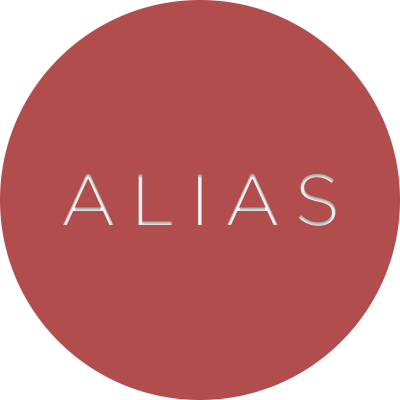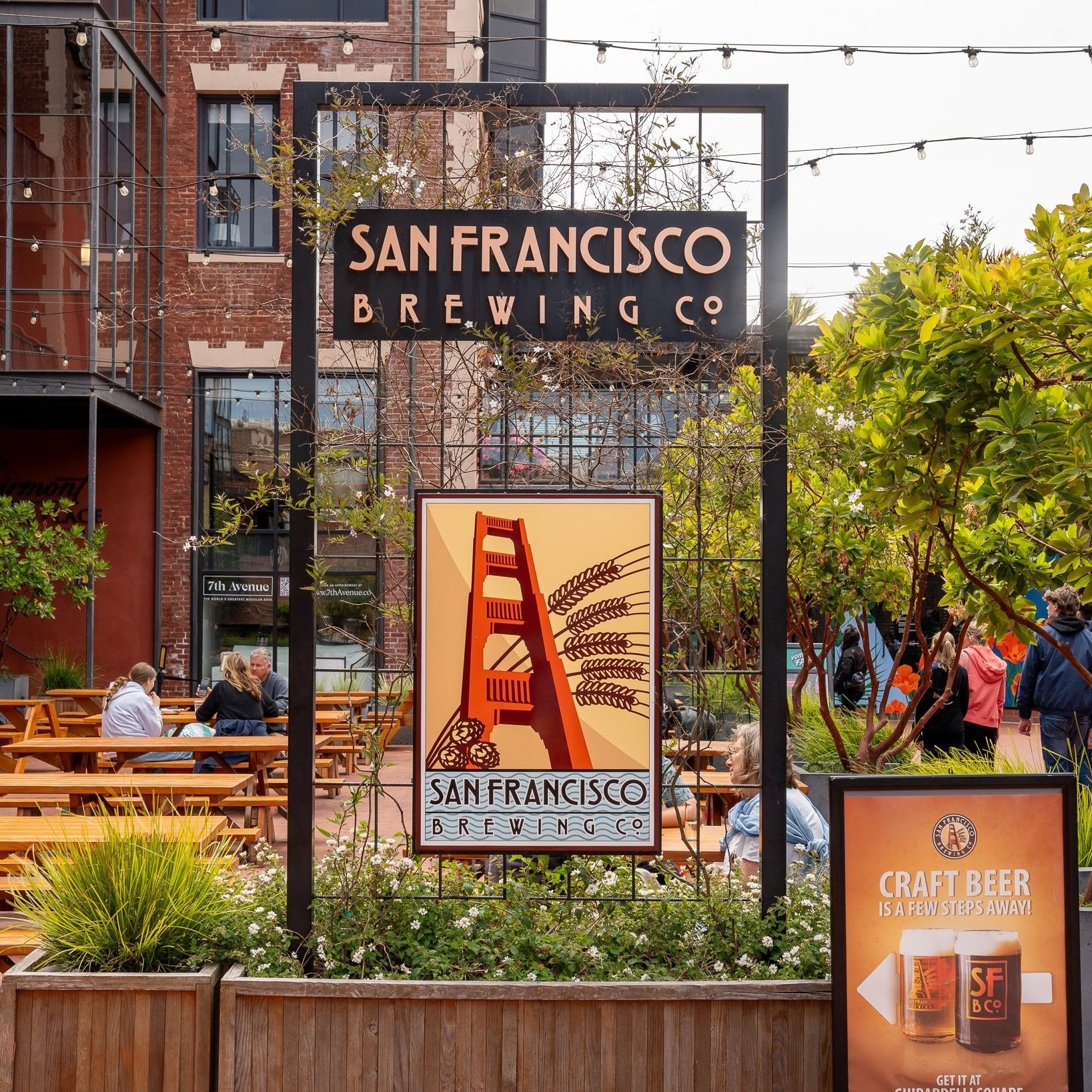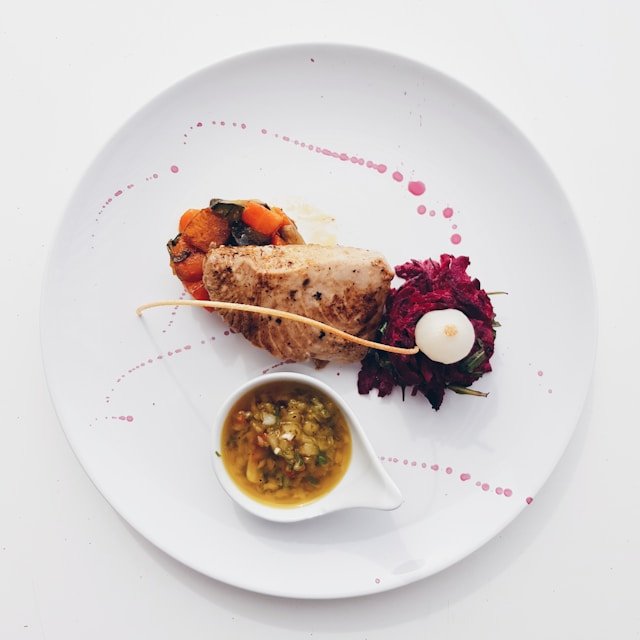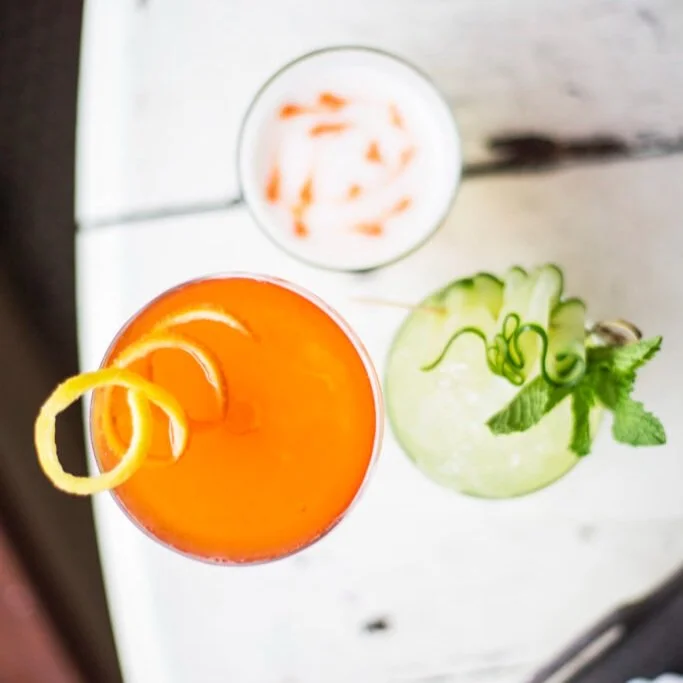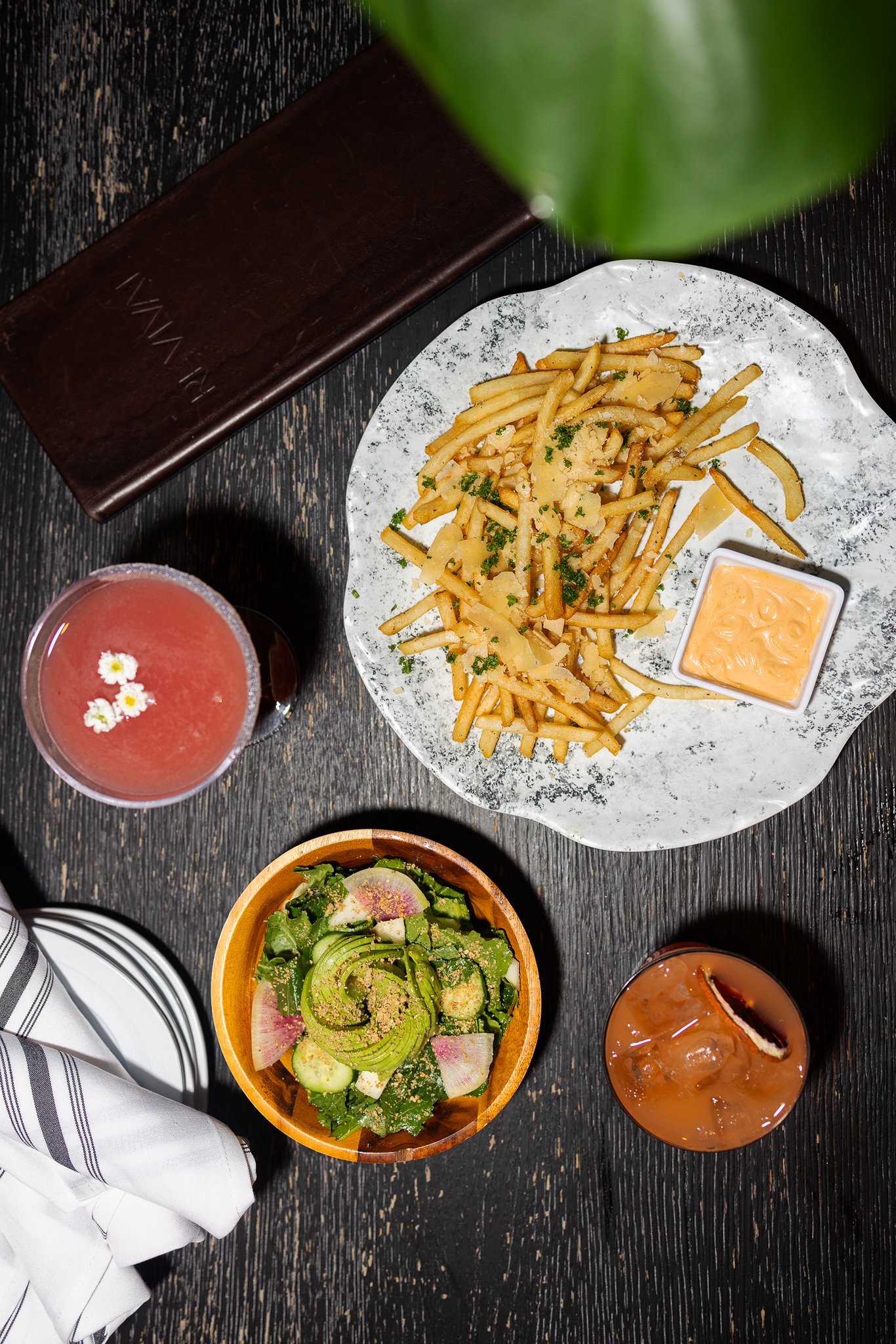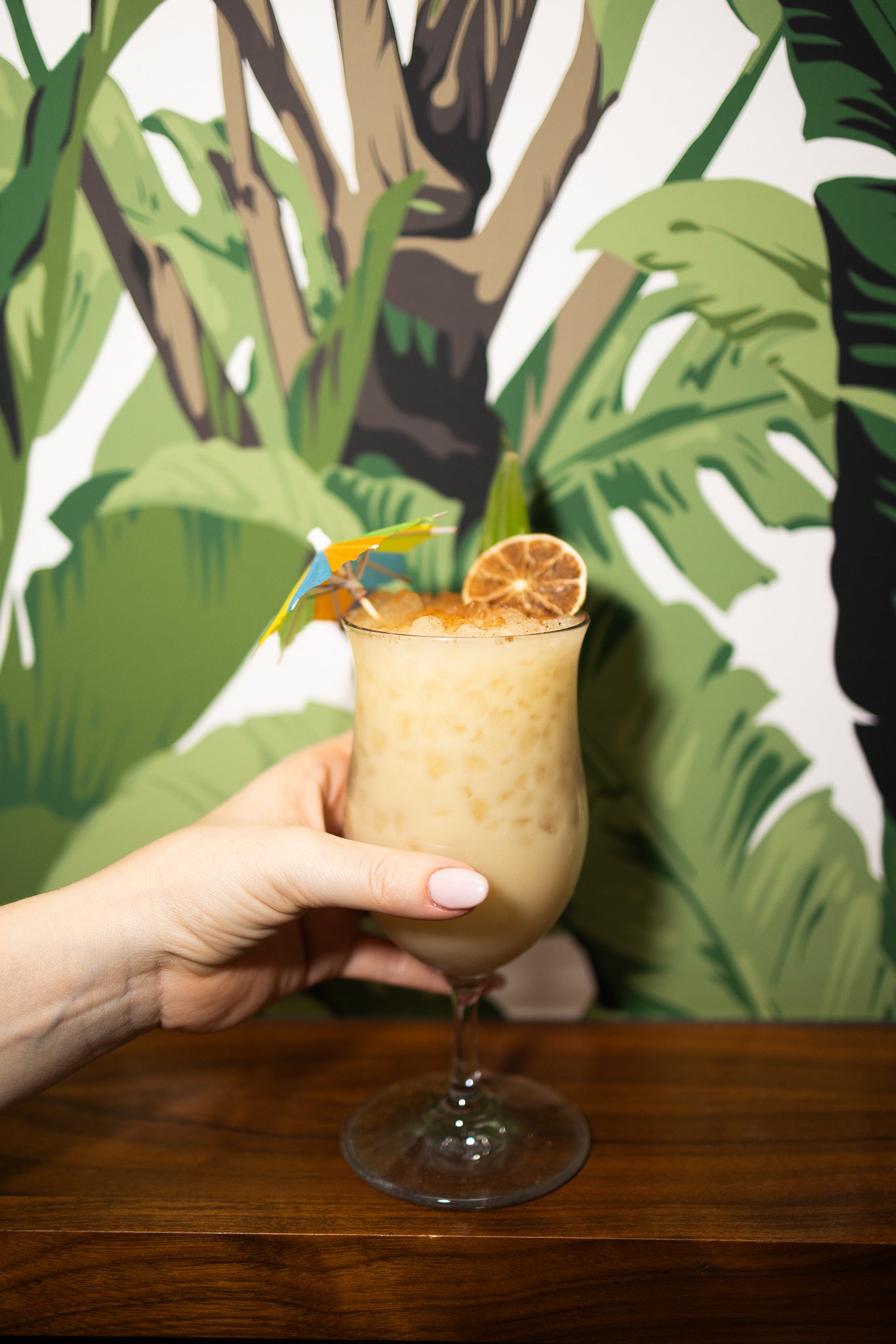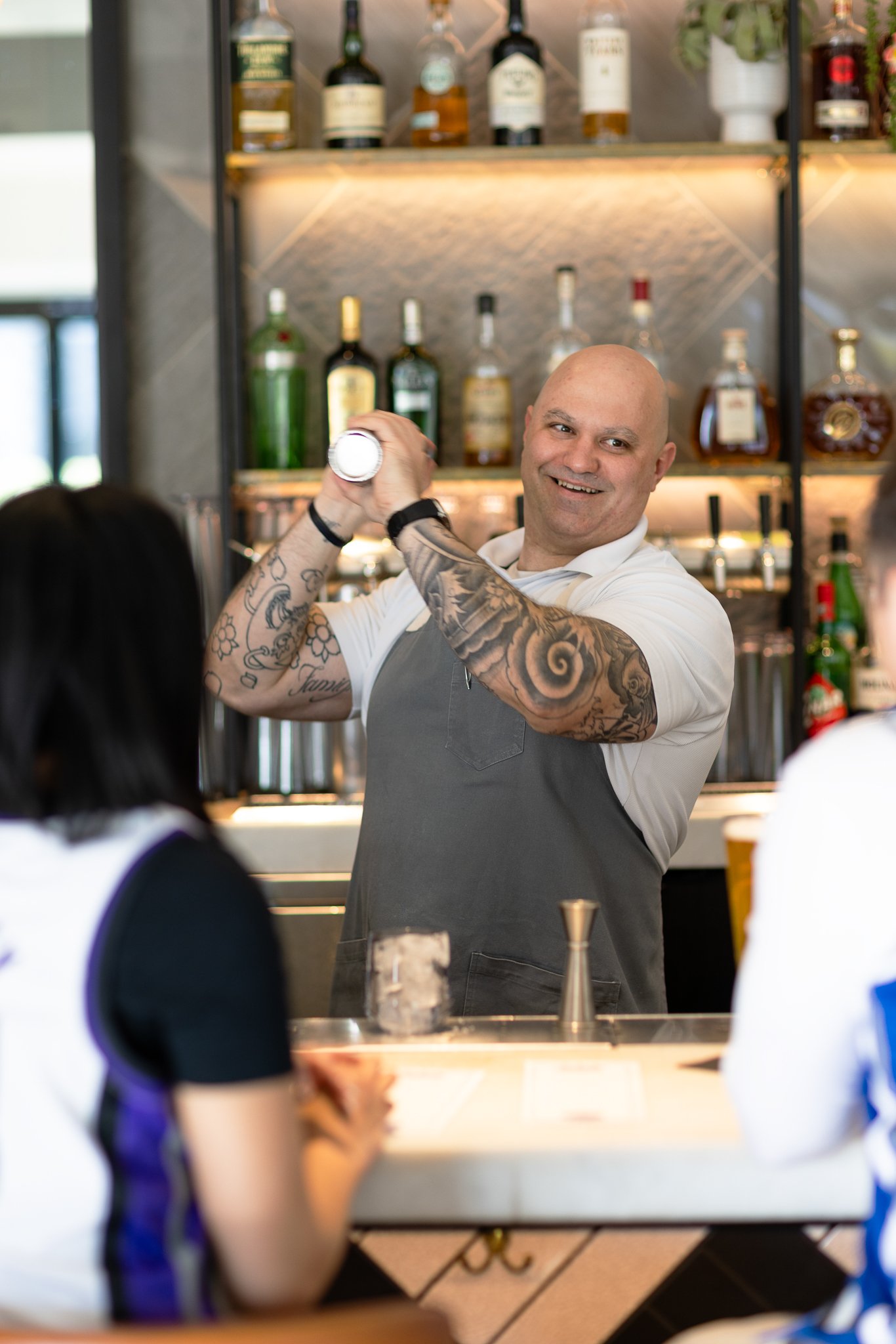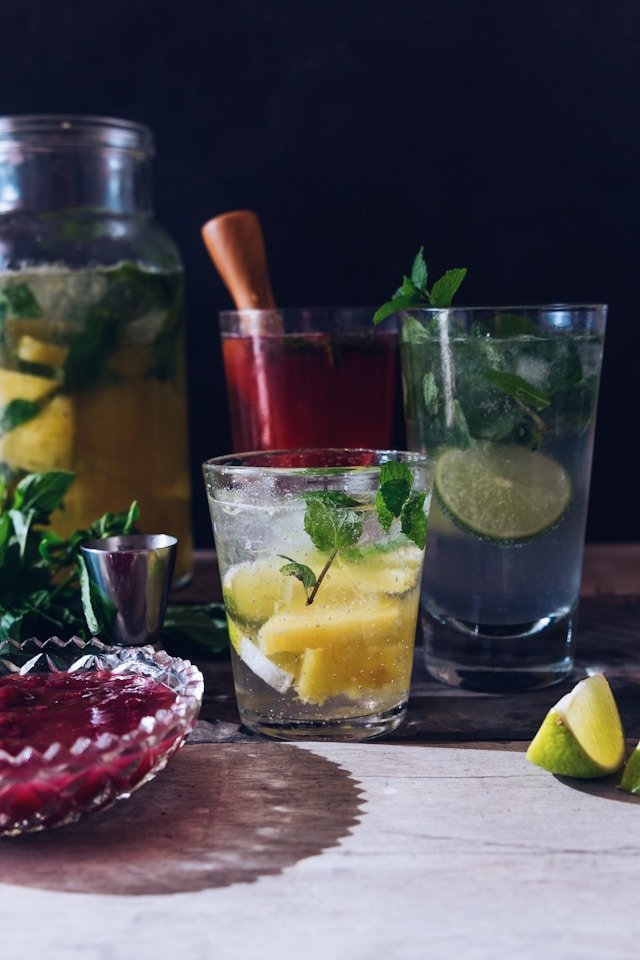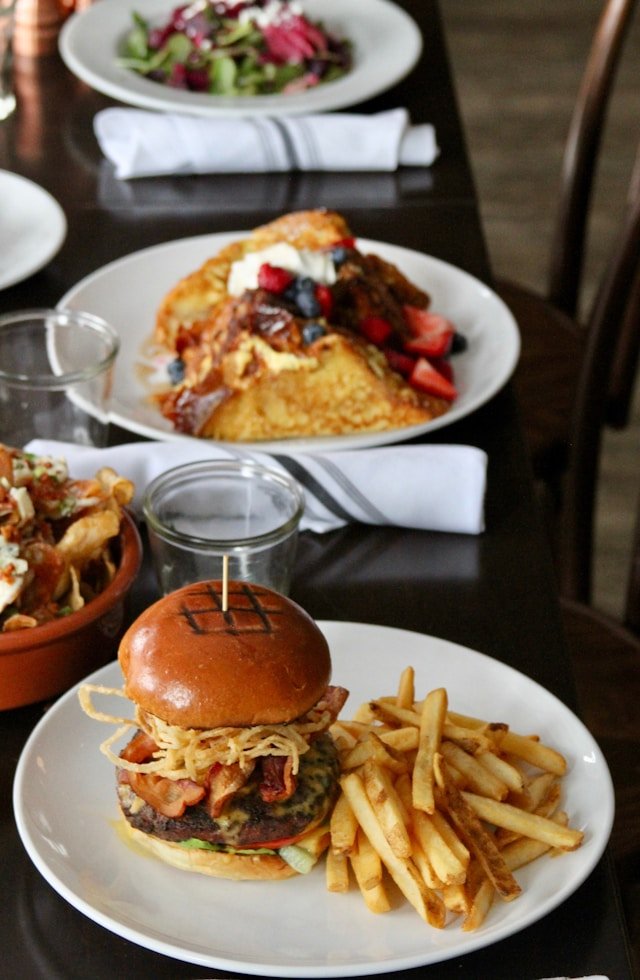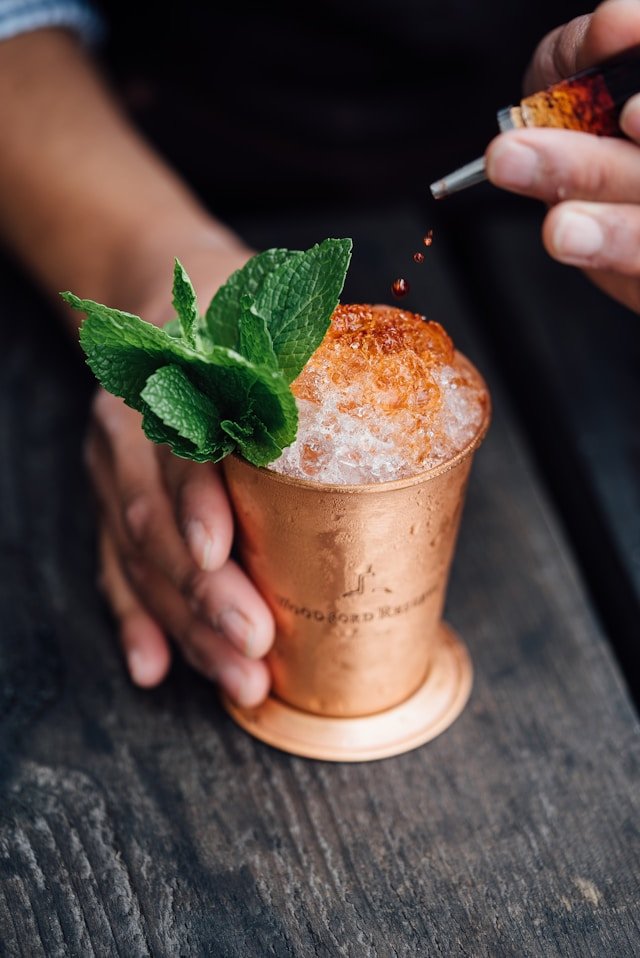The Art of Restaurant Photography: How to Capture Flavor & Experience Through the Lens
Great restaurant photography goes far beyond food photos. It tells an enticing, exciting, and engaging story that can whet the appetite for more.
From venue ambiance and vibe to the intricacies of the food and cocktails, the best restaurant photography leverages high-quality visuals, stand-out subjects, and innovative techniques to invite and intrigue guests while showcasing some of the amazing offerings available at a given establishment.
At Alias, our hospitality marketing experts truly understand the art, nuances, and best practices of restaurant photography.
We also routinely partner with restaurants nationwide to develop all new visual assets, striking photos, video reels, and more that create unique positioning and appeal in any target market.
Unpacking how we do that, this guide to restaurant photography explains:
For more insights from our experienced team, check out our Guide to Videography for Luxury Brands, our Luxury Brand Photography Guide, and our Guide to Hotel Digital Marketing. Please feel free to reach out to Alias for more answers or a quote whenever you’re ready for more.
Where Restaurant, Food & Beverage Photography Goes Wrong: 6 Common Mistakes to Avoid
Before we dive into the essentials and best practices, identifying where restaurant photography can go off the rails can be a key starting point. After all, knowing how photography for restaurants misses the mark is often integral to determining what’s missing, “off” elements, and opportunities to get it right.
To that end, here are some of the more common ways restaurant photography can fall short and how each of these mistakes can affect the final product and the ultimate impact of the photos.
1. Poor Lighting Choices
Lighting in restaurant photography is crucial, and it can be a challenging aspect to dial in just right.
If the lighting is too bright, with a direct flash, restaurant photos of food, beverages, and dining areas end up with:
—> Harsh or insufficient lighting
—> Unappealing shadows
—> Flatten textures
On the other hand, dim or uneven lighting can dull whatever the focal point is, making food seem unappetizing or any space appear to be lackluster.
The ideal lighting for restaurant photography is typically soft and natural, with strategic highlights to emphasize colors, textures, shapes, and/or action without overwhelming the viewer.
2. Overly Styled or Artificial Shots
Stylized shots have a place in professional photos for businesses, but overdoing it is another common mistake in restaurant photography.
That’s because hyper-stylized pictures can:
—> Make food appear unrealistic or “too perfect”
—> Create more distance between the viewers and the actual dining experience
—> Come off as somewhat “cartoony,” with viewers focused more on what’s off than the subject matter being presented
With this misstep, related mistakes that can make restaurant photos seem artificial can include:
Adding props that don’t match the restaurant's atmosphere
Overly altering food presentations
Heavy-handed photo editing that feels contrived.
3. Unflattering Angles
Every dish won’t shine from every angle.
The same is true for different cocktails, tables, and areas of restaurants. That means that:
—> Shooting every plate from a single, standard angle (like straight-on) can come off as uninspired in the final photos.
—> Unusual angles, like extreme close-ups or odd tilts, can obscure important details, making it hard to recognize the subject matter.
Experimenting with different angles can be crucial to revealing the most flattering angles for different shots without compromising clarity.
4. Ignoring the Restaurant’s Brand Identity
Restaurant photography should reflect the unique vibe, ambiance, and brand identity of the restaurant.
Consequently:
—> Fine-dining establishments usually need photos that highlight sophistication, elegance, and luxurious details.
—> More casual eaters tend to need photos that are warm and inviting while communicating comfort and one-of-a-kind charm.
When images don’t align with the restaurant’s theme, they can send mixed messages, confusing viewers and failing to attract the desired clientele.
5. Overlooking the Importance of Cleanliness & Detail
Small oversights can make a big impact in restaurant photography.
That’s especially true when it comes to overlooked details that could suggest messiness or sanitation issues, like (but not limited to):
—> Sauce drips
—> Smudged glassware
—> Crumbs on tables
—> Dingy linens
If missed in high-resolution images, tiny details like these can all stand out like sore thumbs, potentially leading viewers to think that an establishment is sloppy or dirty.
That’s why meticulous attention to cleanliness, garnish placement, and proper arrangement are essential to reflecting high-quality, enticing dining experiences.
6. Amateur Style Photos
Cellphone photos taken on the fly can be fun for social media sharing, but they don’t necessarily make for the best restaurant photography.
In fact, relying on in-the-moment pictures snapped with cellphones can give off an “amateur” vibe, possibly suggesting to viewers that a restaurant:
—> Routinely cuts corners
—> Doesn’t care about putting its best foot forward
—> Is disorganized and unprofessional behind the scenes too
These mistakes can get in the way of effective restaurant photography while also muddying the success of any marketing campaigns, websites, or other efforts built around them.
Thankfully, however, these missteps are 100% avoidable with some planning and best practices under your belt — and with an experienced restaurant photographer in your corner.
How to Plan Restaurant Photo Shoots: 5 Essential Shots
Don’t dive into restaurant photography without a plan and a detailed shot list if you’re serious about getting useful assets for the longer term.
Instead, start to comprise a comprehensive restaurant photography shot list that, at the very least, includes the key shots detailed below. This variety of shots can help you capture a more “complete” picture of the experience at a particular restaurant.
1. Restaurant Exterior & Signage Photos
Set the stage for a dining experience with photos of the restaurant’s facade, outdoor sign, and front door where guests enter (and exit) the establishment. These photos should be inviting and alluring while sharing clear, recognizable views of a restaurant’s exterior, so it’s easily identifiable to first-time visitors.
Pro Tips:
Capture both day and night shots to showcase different moods and outdoor lighting when the sun goes down.
Include angled shots that capture neighboring parking areas, like side lots or street parking, to communicate more to views with these exterior restaurant photos.
2. Restaurant Dining Area Photos
Highlight the main dining area, bar, and any unique seating or reserved spaces, like VIP areas. These photos should capture the general layout, lighting scheme, and atmosphere while showing off the restaurant’s decor and charm. Since this is where guests will spend their time if they visit a restaurant, the diner’s experience should really be center stage in these photos, highlighting what guests can generally expect when they’re in this space.
Pro Tip:
Use different angles, like wide shots for a full-room view and close-ups for details, to offer a more well-rounded perspective.
3. Signature Dish Pictures
Restaurant food photography should make viewers think, “That looks delicious — I have to try it!” To do that, these food photos need to show off textures, ingredient quality, colors, and plating details. Exceptional food photography can transform an ordinary dish into a mouthwatering visual experience that delights the eyes and the appetite.
Pro Tip:
While finished dishes are always fantastic focal points for restaurant food photography, don’t overlook food prep and plating photos. These can take viewers behind the scenes, uncovering more about the chef’s skills, the artistry that goes into plating, and special touches that take the cuisine to the next level.
4. Drinks & Cocktail Photos
Show off cocktails, mocktails, and other specialty drinks, capturing their bright colors, interesting garnishes, and specialty glassware. While cocktail photography can focus on one or more poured drinks, it can also showcase the fancy, brightly colored bottles used to craft those beverages.
Pro Tip:
Beyond featuring the finished drink on a barscape or tabletop, show it “in action,” with a recommended food pairing or with a person enjoying it.
5. People-Centric Shots
Snap photos of staff, guests, and their interactions with each other. Include the “action” of the restaurant experience, with shots of:
Happy hours
Lunch versus dinner scenes
Busy kitchens and/or bar areas
These shows can add personality and authenticity, showing the level of effort and care that go into making each guest’s experience the very best.
Pro Tips:
Pay attention to body language, facial expressions, and the balance of diversity in the people shown in restaurant photos.
Try to capture candids, with natural reactions to enhance authenticity.
3 Key Tips for Getting Restaurant Photography Right
With a thoughtful shot list ready, dialing in the right techniques for restaurant photography can be a key next step. These best practices can start to set up a restaurant photography session for incredible shots and optimal success.
1. Pay Attention to Lighting.
Good lighting can make or break a shot, and the best lighting for restaurant food photography won’t necessarily be the same as the ideal choice for dining room, bar, or kitchen photos.
Generally, it’s best to consider:
—> Natural light for food photography: This can enhance colors and textures, making dishes look appetizing.
—> Diffuse artificial light for evening shoots or dimly lit spaces: This can help capture the atmosphere without casting harsh shadows.
2. Shoot from Different Angles.
Varying your angles can add depth, interest, and uniquely interesting perspectives.
Typically, recommended angles for restaurant photography include (and are not limited to):
—> Overhead shots for flat dishes
—> Close-ups to emphasize details in complex cocktails and multi-layered desserts
—> Wide-angle shots to capture the layout of dining areas and bars
—> Lower angles to align the viewer with a diner’s perspective.
3. Tell a Compelling Story.
Every shot in a restaurant photo shoot should tell a story, both:
On its own: Each picture should be able to stand alone, communicating a key message about the food, beverages, dining experience, or some other element of a restaurant.
As part of a bigger message: Restaurant photos should relate to each other, sharing their own piece of the greater story of what it is to be a guest at a restaurant. That greater story should leave viewers inspired, wanting more, and ready to patronize an establishment when restaurant photography is done right.
5 Insider Tips for Outstanding Restaurant Food Photography
When it’s time to take pictures of dishes and ingredients, here are some expert tips for nailing restaurant food photography.
1. Showcase Freshness.
Food looks best fresh, so plan to capture dishes immediately after they’ve been plated. Working with chefs and kitchens to time these shots can be integral to capturing peak vibrance and appeal in foods’ colors and textures.
2. Play with Composition.
Use various composition techniques, such as the rule of thirds, to balance each shot. Leverage negative space to highlight a dish’s features, adding garnishes or utensils in the frame for extra layers of visual interest.
3. Highlight Key Ingredients.
For certain dishes, emphasizing the primary ingredients can be a winning move.
That’s especially true for dishes built around high-end, show-stopper ingredients, like Dover sole, lobster, and Wagyu beef.
4. Include Tablescapes.
Tables and plates full of food can add a sumptuous, welcoming feel to any photo, inviting viewers to imagine bigger parties of friends and family joining them to dine on delectable fare.
5. Keep It Real.
Authenticity goes a long way in restaurant food photography. That may be more true now than ever before, with the proliferation of AI images that can have people second-guessing credibility.
So, rather than heavily styling the dishes or dramatically editing the resulting photos, focus on presenting them in a gorgeous and still realistic light.
4 Pro Tips for Restaurant Cocktail Photography
Cocktail photography can be a world of its own, with distinct techniques and best practices for featuring the most alluring and attractive aspects of beverages — and the experience of enjoying cocktails at a particular establishment.
Here’s what it can take to dive into cocktail photography with ease and make a fantastic splash with the resulting pictures.
1. Highlight Garnishes & Glassware.
Many cocktails come with specific garnishes and unique glassware, both to add visual appeal and to enhance the flavors of the beverage in some way.
Displaying these components with close-up shots can capture lovely details, like citrus twists, herbs, or smoke, any of which can add personality to the drink.
2. Focus on Reflections.
Glass and liquid are visually dynamic, with excellent capacity to make light “dance” in ways that can be truly magical. So, experiment with reflections on the glass to capture interesting light effects, paying careful attention to avoid any off-putting glare. Slight angles, rather than dramatic ones, the glass can help manage reflections and glare in cocktail photography.
3. Emphasize Colors.
Cocktails and mocktails tend to have bright, vibrant colors that appeal to the eye. Use lighting to make these hues pop, showcasing the drink’s appeal.
While natural lighting may work well for some beverages, certain colors may be better suited for backdrops and/or props that can contrast and/or complement the cocktail’s colors and complexities.
4. Capture Movement.
For an artistic twist, show the pouring, shaking, and/or garnishing of cocktails. These action shots can bring cocktails to life, showing the craft behind the drink and making them particularly engaging on social media.
More Enticing Restaurant, Food & Beverage Photos with Alias
At Alias, our restaurant photography team has deep experience in crafting extraordinary photos, reels, and visual assets designed to make an impact, convert viewers into guests, and amplify brands in any space.
With vast expertise in venue, food, and cocktail photography, we know how to balance technical precision with creative flair to deliver exceptional results.
To find out more or get a quote for our restaurant photography services, simply contact Alias now.
We also invite you to check out our restaurant photography gallery below to get a taste of what we’ve done for past and current clients.
